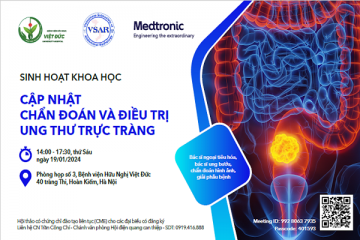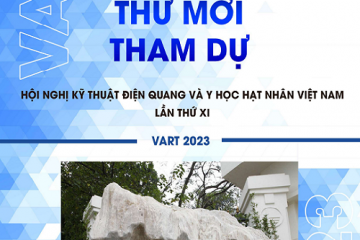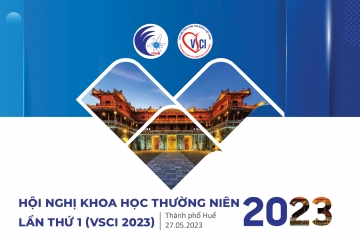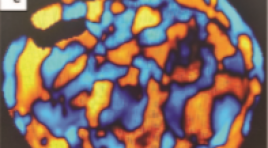
VAI TRÒ CỦA CỘNG HƯỞNG TỪ ĐÀN HỒI 3 TESLA TRONG ĐÁNH GIÁ ĐỘ XƠ HÓA GAN
12/10/2023 10:53:06 | 0 binh luận
SUMMARY Objectives: To investigate liver fibrosis using magnetic resonance elastography (MRE) and the relationship between MRE and histopathology in the assessment of liver fibrosis in patients with chronic viral hepatitis. Methods: Retrospective study, description, investigation of the liver by MRE before biopsy in 20 patients with chronic viral hepatitis in Cho Ray Hospital from 11/2019 to 05/2021. Results: The mean age is 51.4 years and 100% of patients are female. The mean liver stiffness (kilopascal = kPa) is 3.1 ± 0.2 (F1, n = 8), 3.6 ± 0.1 (F2, n = 11), 5.3 (F3, n = 1) respectively. The Spearman correlation coefficient is 0.63 (p=0.003), which shows a strong correlation between the liver stiffness measured with MRE and the fibrosis on the liver biopsy sample evaluated by the Metavir scoring system. Based on the ROC curve and the cut-off value of 3.7 kPa, it can be predicted that there is a presence of significant fibrosis (≥ F2), a sensitivity of 58%, and a specificity of 100%. Conclusions: MRE is a safe and non-invasive technique that can replace biopsy in the assessment of the liver fibrosis stage. Keywords: Magnetic resonance elastography, stiffness, liver fibrosis, chronic viral hepatitis, histopathology.
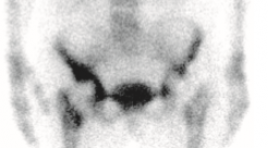
ĐÁNH GIÁ VAI TRÒ CỦA XẠ HÌNH XƯƠNG BA PHA VỚI MÁY SPECT/CT TRONG THEO DÕI BỆNH NHÂN SAU THAY KHỚP NHÂN TẠO TẠI BỆNH VIỆN ĐÀ NẴNG
12/10/2023 10:39:14 | 0 binh luận
SUMMARY Objectives: Describe the clinical and subclinical characteristics of patients after joint replacement who underwent three-phase bone scan at Danang Hospital and evaluation of the role of three-phase bone scan method with SPECT/CT in monitoring patients after joint replacement. Study subjects: 32 patients after joint replacement who underwent three-phase bone scan with SPECT/CT Hawkeye 4 produced by GE at the Department of Medicine, Danang Hospital. Methods of study : Cross-sectional descriptive, longitudinal monitoring, retrospective and prospective. Results: Mean age: 69.88 ± 7.80. Female/male ratio: 23/9. Pain is the most common symptom. The white blood cell count and CRP concentration were mostly incresed. There were no abnormal changes in the X-ray picture. The image of joint loosening accounts for the highest proportion. Most of the knee scintigraphy shows abnormalities. Sensitivity: 83.33%. Specificity: 75%. Accuracy: 81.25%. Positive predictive value: 90.91%. Negative predictive value: 60%. Conclusions: Three-phase bone scintigraphy is a simple method making it easy to perform with its high sensitivity and positive predictive value in monitoring patients after artificial joint replacement. Keywords: Three-phase bone scan, artificial joints, joint loosening.
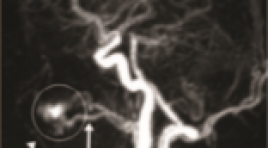
BƯỚC ĐẦU PHÂN TÍCH KẾT QUẢ ỨNG DỤNG KỸ THUẬT MRA TWIST TRONG ĐÁNH GIÁ DỊ DẠNG THÔNG ĐỘNG - TĨNH MẠCH NGOẠI BIÊN
12/10/2023 10:32:28 | 0 binh luận
SUMMARY Background: TWIST is a MRA with high time resolution, which can display the mapping of vascular structure well. The identification of the feeding and draining vasculature of peripheral arteriovenous malformation (pAVM) is important for the appropriate treatment planning. Therefore, we examined the application of MRA TWIST in evaluation pAVM in comparison with Digital Subtraction Angiography (DSA). Objective: To evaluate the feeding arteries and draining veins of pAVM with MRA TWIST in comparison with DSA. Subjects and methods: A retrospective study between January 2016 and July 2021 was conducted upon 25 patients (7 males and 18 females; mean age 22,2; age range 3-53 years) with pAVM, who obtained MRA TWIST and then underwent DSA for confirming the diagnosis. The numbers and names of the feeding arteries and early draining veins were evaluated by two independent readers. The accurate ratio and Kappa test for the interobserver agreement were calculated. Results: About the feeding arteries, MRA TWIST accurately evaluated 82,6% in head and neck, and 85,7% in limbs in comparison with DSA. About the draining veins, MRA TWIST accurately evaluated 84% in comparison with DSA. Kappa coefficient showed good agreement in detecting the feeding arteries and the draining veins between MRA TWIST and DSA. Conclusion: MRA TWIST is a reliable non-invasive imaging technique for evaluation of the feeding arteries and the draining veins of pAVM and can be useful for planning the endovascular treatment. Keywords: peripheral arteriovenous malformation (pAVM), MRA TWIST, digital subtraction angiography (DSA).
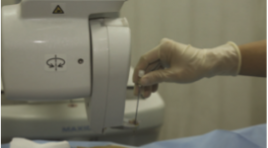
ĐÁNH GIÁ HIỆU QUẢ GIẢM ĐAU BẰNG TIÊM CỒN TUYỆT ĐỐI DIỆT HẠCH ĐÁM RỐI THÂN TẠNG DƯỚI HƯỚNG DẪN CỦA CẮT LỚP VI TÍNH VÀ ROBOT MAXIO
12/10/2023 09:54:20 | 0 binh luận
SUMMARY Objective : Researches on blocking afferent pathways of pain sensation to the central nervous system, relieving cancer pain, chronic pain in the upper abdomen is conducted. Methods: This prospective observational study is conducted on 30 patients whose coeliac plexus was blocked from June 2018 to December 2020 at 108 Military central hospitals. Results: Pre-intervention patients have been severe pain with a VAS score ≥ 6, which greatly affected the quality of life. After coeliac plexus block, 22/30 patients achieved the expected analgesia. The most common side effect is diarrhea. No serious complications Conclusion: The absolute–alcohol injection technique to block the coeliac plexus by computed tomography and Maxio robot-guided offer high precision, the efficacy of initial treatment, and low complication rate. Key words : Cancer pain, coeliac plexus block

BƯỚC ĐẦU NGHIÊN CỨU ĐẶC ĐIỂM HÌNH ẢNH VÀ VAI TRÒ CỦA 18FDG-PET/CT TRONG CHẨN ĐOÁN GIAI ĐOẠN UNG THƯ ĐẠI TRỰC TRÀNG TRƯỚC ĐIỀU TRỊ
11/10/2023 16:44:42 | 0 binh luận
SUMMARY Objectives: To evaluate the imaging characteristics and the role of 18FDG-PET/CT in pre-treatment colorectal cancer staging. Subjects and methods : Study on 39 colorectal cancer patients without specific treatment who had taken 18FDG-PET/CT for staging diagnosis, at the Department of Nuclear Medicine, Imaging Center of Military Hospital 103, from February 2017 to November 2020. Results: The average age was 62.77 ± 14.07. The ability to detect primary tumor lesions in the colorectal of 18FDG-PET/CT was 97.44%. The majority of patients had rectal tumors, the tumor size was mainly in the range of 5-10 cm and the T3 stage accounted for the most proportion with 60.5%. There was 46.2% of patients had regional lymph node metastasis, in which the group of lymph nodes over 10 mm and the N2 group accounted for a lower proportion, but the mean SUVmax was statistically significantly higher than others group. Distant metastasis was occured mainly in liver, lung-pleural and bone. There were 59.0% patients in stage III and IV. Diagnosis by 18FDG-PET/CT was accurately at 80.77% for T stage and 66.67% for N stage. The sensitivity and specificity, positive predictive value and negative predictive value of 18FDG-PET/CT in the diagnosis of regional lymph node metastasis were 100% and 60%; 55.55% and 100%. Keywords : Colorectal cancer, 18FDG-PET/CT, SUVmax.
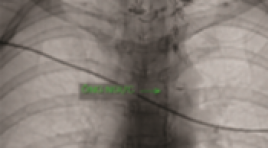
ĐÁNH GIÁ GIÁ TRỊ CỦA KỸ THUẬT CHỤP BẠCH MẠCH TRUNG TÂM SỐ HÓA XÓA NỀN QUA HẠCH BẸN
11/10/2023 16:36:05 | 0 binh luận
SUMMARY Purpose: Describe the technique and evaluate imaging results of the fluoroscopic inguinal intranodal lymphangiography technique. Subjects and methods : Case series study on 37 patients, all were done fluoroscopic inguinal intranodal lymphangiogram. Results: The study was conducted on 37 patients (11 men, 26 women), mean age, 56. The technique was successful in all patients (100%), detected anatomic variants of lymphatic central in 30% of patients, leak point 31/37 cases accounting for 84%. The average time to observe the target lymph vessel was 35.3 ± 20.2 minutes. Conclusions : fluoroscopic inguinal intranodal lymphangiography is a safe procedure, provides visualization of central lymphatic anatomy, detected leak points, and guides for percutaneous lymphatic interventions. Keywords: lymphangiography, thoracic duct embolization, chyle leakage, chylothorax, Chyluria
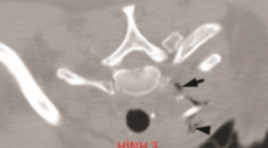
ĐÁNH GIÁ KẾT QUẢ NÚT TẮC ỐNG NGỰC ĐIỀU TRỊ BIẾN CHỨNG RÒ DƯỠNG CHẤP SAU MỔ UNG THƯ TUYẾN GIÁP
11/10/2023 16:24:55 | 0 binh luận
SUMMARY Background: chylous leakage after operation of head and neck is rare but well-known complication. Almost patients with this complication can be treated conservatively but in patients with high flow leakage, the following treatments will be very complicated. Purpose : to report the results of percutaneous thoracic duct embolization (TDE) treatment for chylous leakage of the neck in patients post thyroidectomy and cervical lymph node dissection due to thyroid cancer. Methods : 15 consecutive patients with high flow chylous leak post thyroidectomy were sent to our hospital after failed conservative treatment. All patient were undergone intra nodal lymphagiography then thoracic duct embolization. Results: Fifteen patients with cervical chylorrhea through drainage more than 300 ml/day during average 2 weeks (1 to 5 weeks) were included in this study. TDE was archived in 15/15 patients in which 14/15 TD were embolized ategrade and 1/15 TD was embolized retrograde. One patient had recurrent chylous leakage after 1 week due to recanalization of TD. She was then undergone TD sclerosis injection under CT scanner guidance. All patients had clinical successful with no chylorrhea after intervention. No major complication was noted. All patients were discharged in following weeks after intervention. Conclusion: TDE is minimal invasive and effective treatment for cervical chylous leakage post thyroidectomy. Keywords: chylous leak, chylorrhea, thoracic duct embolization
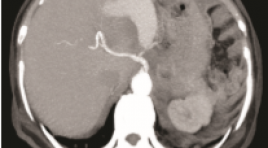
BÁO CÁO CA LÂM SÀNG: ĐIỀU TRỊ TÚI GIẢ PHÌNH ĐỘNG MẠCH VỊ TÁ TRÀNG DỌA VỠ BẰNG PHƯƠNG PHÁP CAN THIỆP NỘI MẠCH
11/10/2023 15:28:24 | 0 binh luận
SUMMARY Gastroduodenal artery (GDA) pseudoaneurysm is a rare surgical entity that causes various symptoms. In the case of rupture, it usually presents an ominous prognosis and mortality rate of up to 40%. Although open surgical procedure is a mainstay, endovascular intervention is emerging a promising treatment in recent years, due to its advantages and safety.We present a case of upper gastrointestinal bleeding caused by GDA pseudoaneurysm threatened rupture in a 71-year-old woman, with medical episodes of acute pancreatitis, a pancreatic body tumor removal surgery was performed, and now the tumor is relapsing and metastasizing. The treatment approach is blocking off the pseudoaneurysm by a covered stent. The procedure was successful and the patient is asymptomatic. Two months later, the pseudoaneurysm reduces its size and completely excluded from the preservation of the blood flow in the artery. Endovascular interventional treatment in the case of GDA aneurysms is considered a promising alternative not only to open surgery but also to an effective emerging technique even in the acute setting. Keywords : Gastroduodenal artery, Covered stent, Pseudoaneurysm
Bạn Đọc Quan tâm
Sự kiện sắp diễn ra
Thông tin đào tạo
- Những cạm bẫy trong CĐHA vú và vai trò của trí tuệ nhân tạo
- Hội thảo trực tuyến "Cắt lớp vi tính đếm Photon: từ lý thuyết tới thực tiễn lâm sàng”
- CHƯƠNG TRÌNH ĐÀO TẠO LIÊN TỤC VỀ HÌNH ẢNH HỌC THẦN KINH: BÀI 3: U não trong trục
- Danh sách học viên đạt chứng chỉ CME khóa học "Cập nhật RSNA 2021: Công nghệ mới trong Kỷ nguyên mới"
- Danh sách học viên đạt chứng chỉ CME khóa học "Đánh giá chức năng thất phải trên siêu âm đánh dấu mô cơ tim"









